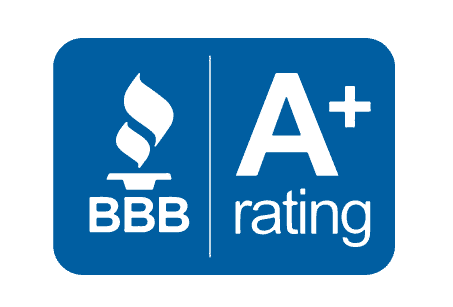
As Canada’s opioid crisis continues, governments and health organizations continue to implement new strategies to reduce harm.
Health Canada reports that almost 4,000 Canadians died of opioid-related overdose in 2017, an increase from 2,946 in 2016. 72% of the deaths in 2017 involved fentanyl, which has become the most destructive substance in the crisis. Some recent harm reduction measures involve the drug naloxone. This substance serves as an antidote to fentanyl and can reverse an overdose of the drug before it becomes lethal. Others involve testing the contents of drugs to see if they contain fentanyl, the even more dangerous carfentanil, or other substances. This enables users to make informed decisions before using them.
Trafalgar Addiction Treatment Centres recently published a comprehensive guide to the opioid crisis, with a particular focus on oxycodone. The following blog focuses on some of the recent public safety measures introduced to combat the crisis. Opioid addiction is an intensely destructive, potentially fatal condition, which requires expert, evidence-based treatment to overcome.
Drug Testing Facilities
In May 2018, the Sandy Hill Community Health Centre in Ottawa introduced a system for drug users to test the contents of their drugs. Staff can use an instrument called a spectrometer to quickly test the drugs and establish what they contain. Sandy Hill is the first organization in Canada to use the spectrometer to test street drugs. They can also identify the presence of fentanyl and carfentanil, two of the most dangerous drugs on Canadian streets. These drugs often prove fatal to users who believe that they are ingesting another substance such as heroin.
Testing Substances
Sandy Hill Community Health Centre will not be prevent users from taking the tested drugs regardless of what they contain. However, users will be able to make informed decisions. Rob Boyd, director of the Oasis Program, states that the staff at the centre will encourage clients to “make their own positive choices about their drug use.” They will be given the option of using their drugs in a safe environment if they do decide to use them, and to avail of the other health and addiction programs the centre provides. Christine Lalonde, who sat on the community advisory committee for the project, told Global News, “It gives them the choice of what they’re going to use, is it the product they wanted to use? And in the end, it’s saving lives.”
This kind of informed use can be an effective harm reduction strategy. It reduces the element of risk for drug users willing to have their drugs tested. It also gives them the option of ingesting them in a safe environment. Boyd also states that Sandy Hill will instantly issue warnings and pass information on to health services and to clients based on test results. Data gathered by the injecting centre will contribute to decisions on whether testing facilities should be introduced into more communities. Facilities such as this could prove a vital harm reduction strategy in the opioid crisis.
Student Response
Student leaders at York University have introduced Naloxone to their frosh week introductory programs. Organizations run by students will provide naloxone packs on campus and encourage students to undergo training in how to use them. The training is a proactive and progressive move from the students. It will prepare them to confront opioid overdoses both on campus and elsewhere, and is the kind of harm reduction strategy that can have a genuine impact. The move came in response to a recent warning from Health Canada that students may not be aware of the threat presented by opiates and may not be familiar with signs of overdose. Health Canada recommends that students carry cards which describe the signs of opioid overdose and what to do should they encounter someone experiencing one.
Claudia Martire, a student leader at York University who also works with the Canadian International Medical Relief Organization, explained the decision to CTV News. “We need to be prepared in case the prevalence of drugs increases on campus,” she said, adding that “it shouldn’t be just in the hands of medical experts.” Martire’s suggestion, that such a destructive crisis cannot be handled by experts and professionals alone, seems increasingly true as the crisis continues.
Government Response
The government of Quebec has also taken drastic measures to combat the opioid crisis. The province will invest $35 million annually over the next ten years to reduce the damage being done by opioids. The government recently introduced a three-year plan to tackle opioid overdoses, alongside a ten-year strategy for tackling addiction more broadly.
All of the province’s pharmacies began carrying naloxone in November 2017. The government also plan to continue making the drug more accessible. While there are currently safe injection sites in Montreal, the province is considering opening them elsewhere. Health Minister Gaétan Barrette also noted that money will be invested in public awareness campaigns around awareness of the addictive potential of opiates- including those accessed through legitimate medical prescriptions. He also stated that there would be investment in research around opioids and their impact on individuals and communities. If Quebec’s aggressive strategies against the crisis provide an instant improvement, other provincial governments may consider adopting similar approaches.
Overdose Prevention Sites
In Vancouver, Providence Health Care, RainCity Housing and Vancouver Coastal Health have partnered to introduce an overdose prevention site at St. Paul’s Hospital. The facility gives drug users access to drug testing apparatus, naloxone, and clean equipment. They can take their drugs under the supervision of trained professionals and will gain access to other forms of support. Scott Harrison of Providence Health Care describes the facility as offering “a pragmatic and practical approach to a problem that exists.” He described the project as “the next step in our overall strategy for addictions and dealing with the opioid crisis.” Ann Gibbon, also of Providence Health Care, stated that other overdose prevention sites in Vancouver have reversed over 1,000 overdoses since December 2016, without incurring a single fatality.
Rather than leaving drug users to take drugs which may contain fentanyl or other equally dangerous substances in unsupervised circumstances, facilities such as this offer them a safe environment in which to test and use their drugs if they so choose. Users may also choose to avail of community support at the centres in order to begin a recovery process. Rather than abandoning them, overdose prevention centres give drug users support and protection that may help them towards lasting recovery.
Conclusion
For more information on the opioid crisis, read our recent blog featuring some of its most shocking statistics. Opiates are intensely addictive, dangerous drugs which can ultimately prove fatal. However, with dedicated professional treatment, it is possible to achieve lasting recovery from opiate addiction. A client-centred, evidence-based treatment program will identify the causes and consequences of an addiction and develop methods for dealing with them. As recovery is a lifelong process, ongoing support after initial treatment is also essential. Trafalgar provides this support through its Aftercare and ContinUcare programs. If you or a loved one is struggling with opioid addiction, contact Trafalgar Addiction Treatment Centres today.





